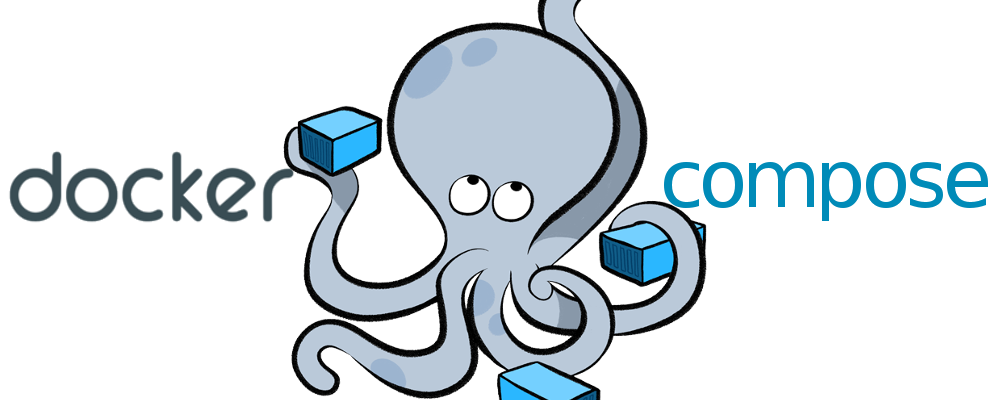[Docker] Let's Learn About Docker Compose
Brothers, am I the only one uncomfortable?
This is the second brothers. There are actually many uncomfortable things.
Use of Docker
When did they say we use Docker?
It would be when you want to use the core technology of Docker, Container.
In other words, for reuse.
The Dockerfile we learned earlier automated many parts required to create a container.
However, there are also disadvantages to Dockerfile.
As discussed in the previous post, there were limitations in automating the settings of the Host OS.
For example, it couldn’t reach port forwarding of the Host OS or mounting the path of the volume.
Eventually, many developers would create a Dockerfile, connect containers created through build, and mount volume.
Docker Compose

Docker Compose solves the above issues.
The details that can be defined in docker-compose.yml include volume, port, env as well as support for performing various operations to define containers.
It also not only defines a single container, but also supports the definition of multiple containers and setting relationships between containers.
The official Docker documentation introduces Compose as a container-based application that is platform-agnostic.
.yml, .yaml
Before learning about Docker Compose, there is something to know.

Earlier, it was stated that docker-compose.yml can be used to set commands for multiple containers.
So, what is a .yml file?
Files with .yml, .yaml extensions are a form of markup language called Yet Another Markup Language.
It forms a hierarchy through colons and indentation like Python, allowing easy writing of specific objects, configuration values, etc.
To intuitively understand, let’s look at the example below.
car:
name: "bus"
color: "red"
door: 4
capability:
max_weight: "4T"
human: 10
customers:
- name: "Alice"
age: 14
- name: "Ban"
age: 16
- name: "Yang"
age: 26This form of .yaml can also be expressed in the same JSON format as below.
{
"car": {
"name": "bus",
"color": "red",
"door": 4,
"capability": {
"max_weight": "4T"
}
}
}In this way, .yml is a file format that is convenient to use when expressing data in a hierarchical form, using existing formats such as JSON and XML.
docker-compose.yml
Now let’s create docker-compose.yml and specify the containers we will use.
services
First, the specification for each container we define is defined as a unit called service.
If you explain using the .yml format, it would be this format.
services:
container_1:
...
container_2:
...image
This is the part where the image to be retrieved is specified.
There are various ways to retrieve the desired image.
# Image name
image: redis
# Image name: tag name
image: redis:5
# Image name@sha256: IMAGE ID
image: redis@sha256:0ed5d5928d4737458944eb604cc8509e245c3e19d02ad83935398bc4b991aac7
# Repository name/image name
image: library/redis
# Registry name/repository name/image name
image: docker.io/library/redis
# Private registry address:port/image name
image: my_private.registry:5000/redisbuild
This is used when you want to create a container through Dockerfile.
services:
frontend:
image: awesome/webapp
build: ./webapp # Acts as context if sub-levels are not specified
backend:
image: awesome/database
build:
context: backend # Path to search for Dockerfile
dockerfile: ../backend.Dockerfile # Specify the file name if it is not Dockerfile
custom:
build: ~/custom # "~" can also be used to specify the home directory- The
awesome/webappimage is built using the./webappsubdirectory in the same folder as the Compose file as the docker build context. An error occurs if there is noDockerfilein this folder. - The
awesome/databaseimage is built using the./backendsubdirectory in the same folder as the Compose file. Thebackend.Dockerfilefile is used to define the build stage, and this file (backend.Dockerfile) is defined based on the context path (./backend). In this sample, it is interpreted as the parent folder of the Compose file, so the siblingDockerfileofbackend.Dockerfileis also a search target. - The
customservice is built usingcustomdirectory in the user’sHOMEdirectory as thecontext.
When image and build are both present
It was said that image creates a container based on the specified image, and build creates a container using Dockerfile.
However, since it is possible to retrieve an image through the FROM keyword in Dockerfile, one might worry whether these properties might conflict.
You can also find a section on this in the official Docker documentation, confirming our worry that there is no guarantee of which image will be used.
Unless indicated otherwise by the user, it states that it first retrieves the image defined in image and builds the image from the Dockerfile if an image cannot be found in the registry.
depends-on
When defining multiple services in docker-compose.yml, if a certain service needs to start after a particular service has started, you can specify it with depends_on: service name.
services:
seviceA:
...
depends_on: serviceB
serviceB:
...entrypoint
Performs the same role as ENTRYPOINT discussed in the Dockerfile.
In other words, it defines the initial command to execute when the Docker container runs.
As covered in the previous chapter, since this command can be declared only once, if
ENTRYPOINTis also specified in the Dockerfile through thebuildoption, one (or both) must be deleted.
In many cases, it seems that it is used to define which shell to use initially.
entrypoint: /code/entrypoint.shlabels
As covered in the LABEL section of the Dockerfile, it’s an item that allows adding metadata to the container.
environment
It’s used when defining environment variables to be used in the container.
Two methods can be used.
- Map method
environment:
RACK_ENV: development
SHOW: "true"
USER_INPUT: "hello"- Array method
environment:
- RACK_ENV=development
- SHOW=true
- USER_INPUT=helloenv_file
If you want to define environment variables in a file rather than direct definition, use this option.
env_file: some_env.env# some_env.env
RACK_ENV=development
VAR="quoted"When using this method, you can manage environment variables in the form of a file, which has the advantage of easier management.
command
Like we learned in the CMD section of the Dockerfile, it’s the part where we define commands to give to the container responsible for the service.
command: ls -alSince I’m a backend developer, I’ll describe the difference between the two commands (Dockerfile:CMD, docker-compose.yml:command) from a backend developer’s perspective.
CMD of the Dockerfile is generally used for commands to install basic components to configure the server such as pip install, gradle build.
Think of it as making it in a form that can run the container (but it’s not mandatory to follow this strictly).
command of docker-compose.yml is often used for commands that deploy servers (e.g. ... run serve) as in commands that run the service.
volumes
volumes is used to define connecting the user’s created Docker Volume or Host Path and Container Path, or declaring a volume itself.
Specification of volume
The method to define the sub-elements of volumes combines two types of notation: shorthand and normal syntax.
Generally, shorthand is used but the standard syntax can also be used depending on the circumstances or user’s preference.
- Normal syntax elements
| Element | Description |
|---|---|
type | Specifies whether to use Docker Volume (volume) or to bind (bind) with a Host OS path. |
source | Specify the Volume name or ID, or the Path of the Host OS to be bound. |
target | Enter the Path of the Container. |
read_only | Set if you want to specify it as read-only. |
...
volumes:
- type: volume
source: db-data
target: /data
...- Shorthand notation
Designate using the format VOLUME:CONTAINER_PATH:ACCESS_MODE.
ACCESS_MODEis set torwby default.
services:
service_1:
image: some/image
# Connecting Docker Volume and Container Path
volumes:
- db-data:/etc/data
service_2:
image: some/image
# Connecting Host OS's Path and Container Path
volumes:
- .:/var/lib/backup/data
service_3:
image: some/image
# Connecting Host OS's Path and Container Path and setting Container Path to read-only
volumes:
- .:/var/lib/backup/data:roDefining Volume
If you want to define a Volume through volumes, place volumes as the top-level element of docker-compose.yml.
# Define Docker Volume
volumes:
db-data:ports
Operates in the same way as the -p option used in run and create of the Docker CLI.
It maps the Port of Host OS and Port of Container Path.
...
ports:
- "8000:8000"
...In the configuration above, all requests coming to port 8000 of the Host OS will instead be forwarded to port 8000 of the Container.
Docker Compose CLI
Now all that’s left is to create the container.
Using the docker-compose up command will find and automatically execute the docker-compose.yml file in the specified directory.
In the newly released Docker Compose V2, it specifies to use the docker compose keyword to execute, so keep this in mind if using V2.
The -d option enables the service to run in background mode. (Commonly used)
The -f [COMPOSE_FILE_NAME] option allows you to run Docker Compose through a specific file other than docker-compose.yml.
The docker-compose start [SERVICE_NAME] command allows you to run a specific service within the services.
Conversely, the docker-compose stop [SERVICE_NAME] command is used to stop a specific service.